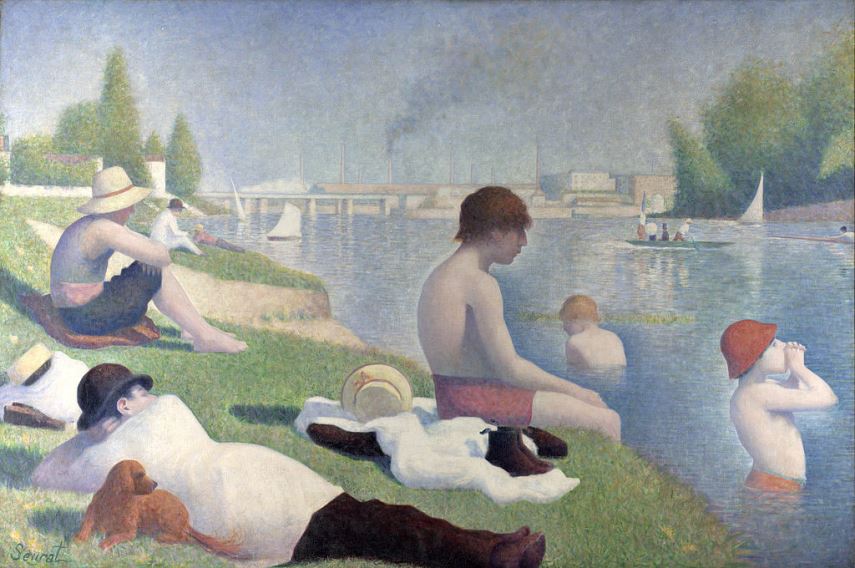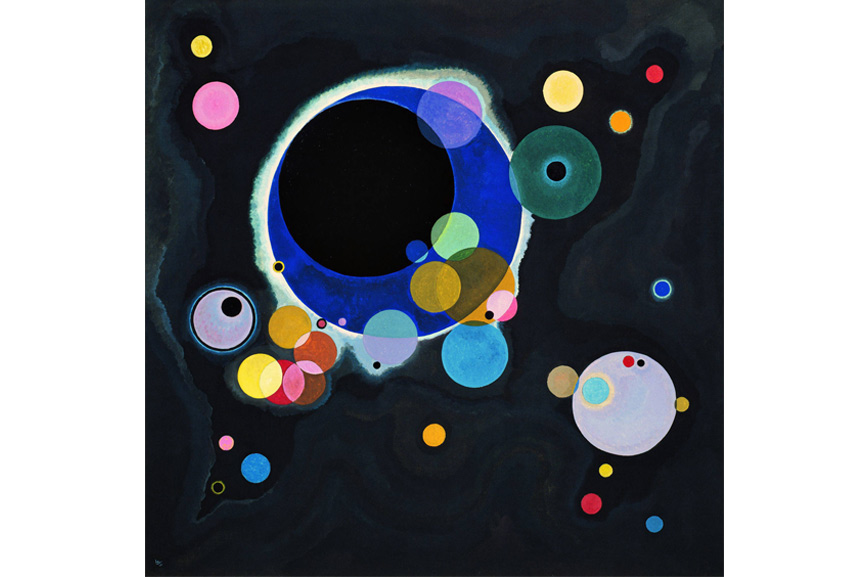What Is Compositional Unity and How Does It Unify Art
Hard to define but instinctively recognized, unity in art is 1 of the art'southward principles representing the sum of compositional elements. The arrangement of different pieces producing the harmonious, counterbalanced, and complete whole would be a definition of unity in art. Exploring different visual languages and attempting to create the nearly pleasing prototype, artists play with different means of achieving a harmonious visual solution. As much as authors strive for originality and their ain personal expression, some rules just need to exist obeyed.

How To Achieve Unity in Art?
Unity is a quality of wholeness and oneness that is achieved by the proper apply of art elements and principles. Understood equally a complete opposite to the notion of variety in art, unity is both an idea of calmness, simplicity, or repetition of the aforementioned [i]. On the other hand, the temper of unity is present in gestural and expressive paintings as well. At the core of this principle, is, in fact, a question – How does one achieve a sense of order in the limerick without being tiresome?
Understanding that all the pieces of the work need to function in the same management, many artists decide to restrict their color choices, to rely on the apply of the same, or use of an overall texture and pattern in order to accomplish harmony. The utilize of similar objects, common motif or background, focus on the same brushstroke, and inquiry into the notions of balance or symmetry are all understood every bit compositional tools. Artists do not utilize these tools within one strict method but rather in the chase for harmony nosotros recognize sure trademarks of each individual fashion. To accomplish unity in art, some prefer to use simply primary colors, echo geometric shapes on a neutral background, or apply a variety of texture created with various lines.

Examples of Harmonious Solutions by Different Artists
Thinking back to the age of Renaissance, the gold ratio or golden rectangle was one of the first compositional tools that exemplified the search for order. This search reflected the adoration for nature and divine. Various painters, such as Leonardo da Vinci, Salvador Dali, or Georges Seurat implemented the idea of the golden ratio. Today, we are provided with a grid which in fact helps us to recognize the placement of the artwork parts following such an erstwhile idea. The idea of the grid today diverse graphic designers employ to aid suit different elements in poster or web page design[two].
Come across more works by Salvador Dali on our marketplace!
Looking back at the nativity of abstract art, famous artist Wassily Kandinsky was a pioneer in the development of abstruse, nonrepresentational pieces. Assertive in the expressive quality of abstract forms, line, and color, he oft used repetition to help build his paintings. In his painting Several Circles, harmony is achieved by the repetition of the circle on the neutral background. Variety is also achieved past the various sizes and colors of the geometrical object. In his surreal painting Golconda, Rene Magritte also relied on repetition but also focused on the brake of the color palette. Using grey tones and pastels, along with the repeated use of windows and men, a pattern was created across the entire painting. Relief from such constant motif is provided in the plain grayness building placed on the right. Diverse artists, such as above mentioned Georges Seurat, Jasper Johns, or Cesar Santos played with texture and brushstrokes to achieve gild and variety of the rhythm in their paintings.

The Sense of Order in Contemporary Art Production
The spirit of postmodernism, influenced past the need to break strict definitions drives creative authors to question issues never questioned in the past. The strict edge between diverse disciplines is gone nevertheless what remains are the fine art elements and its principle. Followed by the need for order, various artists play with the idea of the chaos. Looking at Tracey Emin's piece of work My Bed we recognize that the refusal to follow rules became the dominion itself. All the various found objects worked together to assist form a unity in the context of the piece and this, of form, is yet some other quality of unity in art. What may appear equally a misbalanced composition, in fact, may hide an allegory of various philosophical or social bug, and in such works i needs to view each object as a symbol.
Click here to come across available works by Tracey Emin!
From a practical betoken of view, the search for a harmonious solution influences the placement and order of lines, texture, sizes, shapes, or colors within the piece of work. To reach the sense of social club, which helps transmit the work'due south message or the desired atmosphere is why unity in art is a crucial and important principle. If a sure element broke away from the underlined compositional road, a produced painting or a sculpture would seem slightly off. In the end, the work needs to communicate and without a sure order, the message of the piece would not reach its public.

Editors' Tip: Foundations of Fine art and Blueprint
The principle of unity is mayhap the most important of the blueprint principles, yet information technology is often the nearly difficult i to understand. To understand this complex notion, the author of the volume takes us to the first and presents the foundations of art and design. Exploring in diverse chapters the micro to macro topics, complex artworks and their inner systems standing at its cadre are brought closer to the readers. Looking at colour, line, texture, proportion, and movement, the author explores how diverse ideas and concepts are built.
References:
-
- Collingwood, R., G., The Principles of Art, Read Books, 2011
- Zakia, R., D., Page, D., Photographic Limerick: A Visual Guide, Elsevier Inc., 2011
All images used for illustrative purpose only. Featured paradigm in slider: Wassily Kandinsky - Abstract Composition. Image via widewalls.ch; Yayoi Kusama - Kusama with Pumpkin. Epitome via anothermag.com;Damien Hirst - Spot painting. Epitome via whatartdoes.wordpress.com
Source: https://www.widewalls.ch/magazine/unity-in-art